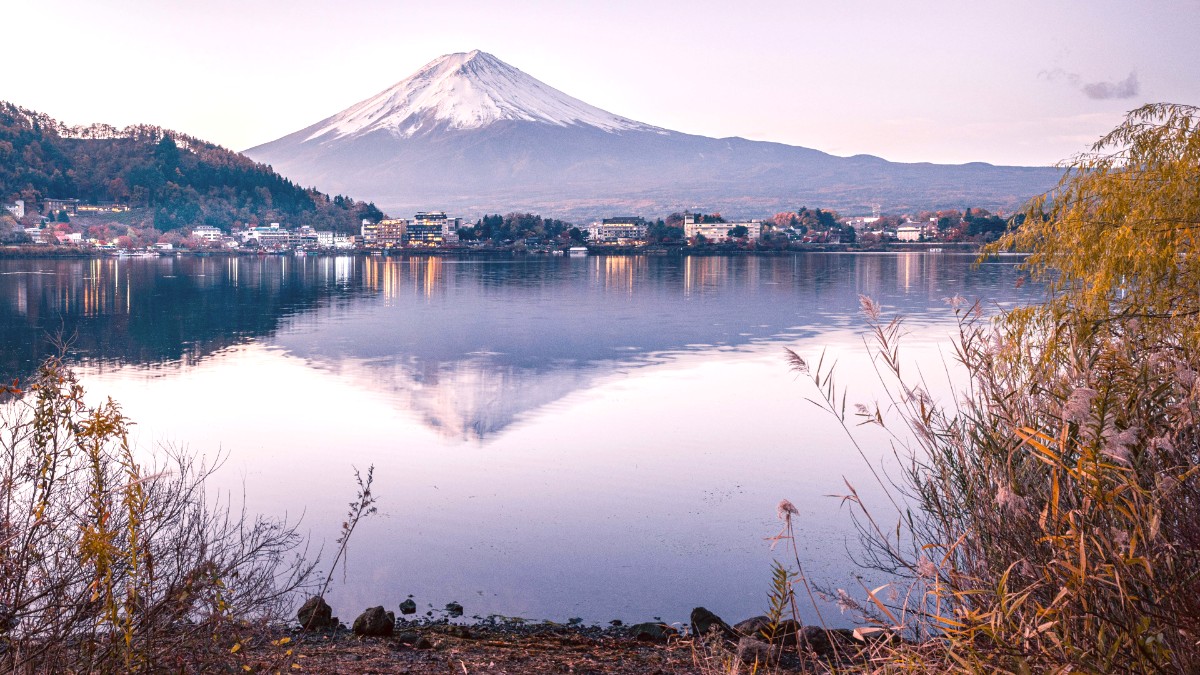
West Of Tokyo, Japan
Mount Fuji is Japan's highest peak and an UNESCO World Heritage site. Its striking presence is visible from many points throughout the region.
The Fuji Five Lakes (Fujigoko) are five lakes formed by previous volcanic eruptions. Each lake provides unique views and activities.
Consider visiting on weekdays outside of peak seasons.
Traditional hot spring town with older ryokan architecture, reflecting its past as a resort.
Sections of this historic highway from the Edo period remain, allowing walks on ancient stone pavements.
Ancient shrine, significant spiritual site and guardian of Lake Ashi. Distinctive torii gate in the lake.
Dedicated to Mount Fuji's deity. Kitaguchi Hongu Fuji Sengen Shrine marks a traditional pilgrimage start.
Head temple of Nichiren Shoshu Buddhism, attracting pilgrims and visitors interested in its history.
The Mount Fuji region is a haven for nature enthusiasts. Discover some less-visited spots for unique experiences.
Home to Chureito Pagoda, known for panoramic Fuji views and cherry blossoms.
Famous for seasonal flowers (lavender in summer, kochia in autumn) with Fuji backdrop.
Japan's longest pedestrian suspension bridge. Panoramic views of Mount Fuji, Suruga Bay, and Izu Peninsula. Book tickets on GetYourGuide.
Provides aerial views of Lake Kawaguchiko and surrounding area, with Mount Fuji in the background.
Owakudani's volcanic activity. Near Lake Saiko, explore lava caves (Narusawa Ice Cave, Fugaku Wind Cave).
Beautiful waterfalls in Shizuoka Prefecture, fed by Mount Fuji's underground spring water. A serene natural sight.
Traditional Japanese village with thatched-roof houses, restored into a craft village. Offers workshops, traditional goods, historical rural life insight. Often less crowded than Kawaguchiko spots.
Experience the beginning of the traditional pilgrimage route up Fuji (Yoshida Trail entrance). A quieter, more historical approach compared to the busy 5th Station.
The main Sengen shrine, which once owned Mount Fuji itself. Located in Fujinomiya city, it is a significant historical and spiritual site often overlooked.
Capture the region's beauty with these unique perspectives.
Make the most of your sightseeing adventure with these pointers.
For attraction tickets, use platforms like GetYourGuide.
Optimal visibility of Mount Fuji typically occurs during autumn and winter months, from October to February.
The volcanic activity at Owakudani can sometimes lead to operational changes for the Hakone Ropeway.
Popular sightseeing spots can become busy, especially during peak times.
While not a main wildlife destination for large animals, the region still has natural points of interest.
Practical advice to enhance your exploration of the Mount Fuji region's attractions.
Always carry a charged phone or camera with enough storage. The views change quickly, and you will want to capture them.
Utilize local maps and transportation guides. The Hakone Free Pass is highly recommended for efficient travel within Hakone.
Weather around Mount Fuji can be unpredictable. Carry layers and prepare for sudden changes, especially when ascending higher elevations.
Centrally located around Kawaguchiko Station. Buses connect to most points of interest around the lake.
Spreads across various hubs like Hakone-Yumoto, Gora, Togendai. The Hakone Loop transportation system connects these efficiently.
Odawara serves as the main shinkansen gateway for Hakone, making it a convenient entry point.
Accessible by bus from Kawaguchiko Station or direct buses from major cities. Check their website for specific routes.
The Hakone Ropeway operates from approximately 9:00 AM - 5:00 PM (seasonal changes). It may close due to strong winds or volcanic activity.
The Kawaguchiko Ropeway provides stunning aerial views.
Enjoy Lake Ashi on a scenic cruise.
Always carry a charged phone or camera with enough storage. The views change quickly, and you will want to capture them.
For seamless access to attractions, consider pre-booking tickets online through platforms like GetYourGuide.
Explore further beyond the main attractions to discover more of what the Mount Fuji region has to offer.
Seek out some less-visited spots for unique experiences, away from the typical tourist routes.
Connect with locals and consider new areas for a different perspective on the region.
Discover the western side of Mount Fuji, offering different views and historical significance.
This area is often overlooked by visitors focusing on the northern side.
Explore the town of Gotemba, known for its shopping and as a Fuji gateway.
Offers shopping opportunities and direct access to Fuji climbing routes.
Mishima serves as a convenient transport hub for regional exploration.
An excellent transport hub for exploring Hakone or the western side of Fuji.
Areas along the Izu Peninsula, south of Hakone, are gaining popularity.
Discover beautiful coastal areas for driving and seaside activities.
The Izu Peninsula also has a wide array of hot spring towns and resorts.